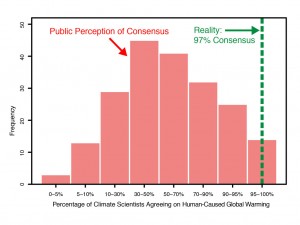From the category “creative responses to environmental challenges“: Edible Cutlery. As the world is wasting incredible amounts of mostly fossil-fuel based plastic, and wood-based chopsticks cutlery, a couple of people in India (Bakeys.com)have come up with practical, edible cutlery. Including Forks, Spoons and chopsticks, this cutlery is made from double-dried bread, has a shelf-life more than three years. It also bio-degrades within just a couple of days and is reported to be very tasty. A truly creative response to a considerable problem.
Environmental
The other inconvenient truth
Johnathan Foley is director of the Institute on the Environment at the University of Minnesota. He recently received a Heinz Award, which is given annually to people who improve the human condition and environment through work in areas ranging from poverty alleviation to the arts and sciences. The award citation for Foley begins as follows: A scientist on the leading edge of understanding global ecosystems and the study of complex environmental systems, Jonathan Foley, Ph.D., has dedicated his career to examining and finding solutions for the challenge of feeding an ever-growing population while at the same time protecting our planet…
The future of the human species
Today’s headlines from the political left and right form a striking diptych that surely tells us something about the future of the human species. From Truthout comes this article, The March of Anthropogenic Climate Disruption, providing the sombre and sober truth about the state of the environment on planet Earth. While most of us do our best to ignore them, the signs of catastrophic climate change are all around us. This article does a good job of detailing several of the most recent signs and driving home the point that we are probably long past the point of no return…
Scientists begin to consider human extinction
Within the climate science community there is now virtually no debate that human-induced climate change is real and that it poses a serious challenge to the future of human civilization and the existence of many other plant and animal species on this planet. However, there is still plenty of debate among climate scientists over other questions, including the questions of just how grave and how immediate the threat of climate change really is. This recent article by Dahr Jamail is a summary of the some of the latest findings from those scientists who are most alarmed about the current situation.…
Climate change and capitalism
Scientists have been ringing the alarm bells about climate change for decades now, but the message, which is barely filtering through into the public consciousness, has yet to do anything to reverse the destructive path that human civilization is on. There are perhaps many reasons for this, but the crux of the matter is corporate capitalism and it’s control of the political process. Corporations are driven by the logic of maximizing profits at all costs, including costs to society and to the environment, and politicians are driven by the logic of catering to these corporations, on whom their political careers…
Fukushima and the mainstream media

On March 11, 2011, the Fukushima I Nuclear Power Plant was severely damaged as a result of a massive earthquake and subsequent tsunami that wreaked havoc along parts of the eastern Japanese coastline. Numerous equipment failures at the power plant led to nuclear meltdowns, a rapid loss of coolant inside the facility, and the release of large quantities of radioactive material. It was the largest nuclear disaster since Chernobyl and is one of only two disasters (the other being Chernobyl) to be classified as a Level 7 event on the International Nuclear Event Scale. In the days and weeks following…
Do the Math (documentary)
Bill McKibben is one of the greatest environmental writers and activists of our time. In 1989 he wrote The End of Nature, which is considered by many to be the first book on global warming written for a general audience. Since then he has written countless articles, given hundreds if not thousands of public lectures, and is the main organizer of the 350.org movement to solve the climate crisis. One year ago McKibben published an influential article in Rolling Stone magazine entitled “Global Warming’s Terrifying New Math.” The thesis of the article is that there are three significant numbers that everyone needs…
Global greenhouse gas emissions chart

Ecofys, a sustainability consultancy has put together a clear and well-arranged chart that maps worldwide greenhouse gas emissions by source and sector. It is based on data from credible sources such as the IEA, the EU Joint Research Centre, CDIAC, and the Global Carbon Project. One point worth noting is that while this chart analyzes the greenhouse gasses by source and sector, it does not show the varying contributions to climate change of these different gasses. For example, there is much less methane (CH4) being released into the atmosphere than carbon-dioxide (CO2), but CH4 is about 25 times more potent than CO2…
The climate change debate in brief

A new survey, published in the peer-reviewed Environmental Research Letters, a publication of the Institute of Physics (IOP), has definitively confirmed the scientific consensus in climate science literature: 97 percent of peer-reviewed papers agree that global warming is happening and human activities are responsible. The survey, Quantifying the consensus on anthropogenic global warming in the scientific literature, examined some 12,000 peer-reviewed climate science papers and found a 97% consensus that humans are causing global warming. The work expanded upon an earlier survey of the literature by Naomi Oreskes, published in 2004, as well as an informal review conducted by James Powell, published on DeSmogBlog in 2012. Lead author of…
HOME (documentary)
HOME is a documentary that highlights how human activities are altering planet earth. It’s a direct, and at times emotional, appeal to viewers to wake up and pay attention to what is going on around them. It is filled with stunning and disturbing footage from around the globe. But it’s not all doom and globe. The film ends with uplifting scenes and information on some of the positive changes that are taking place all around the world today and ways in which individuals can act, as citizens and consumers, to avert catastrophe. Video embedding has been disabled by request, but…
Concrete canvas shelters (creative responses)
From the category “creative responses to environmental challenges“: Concrete Canvas Shelters. These are inflatable concrete buildings, hardened shelters that require only water and air for construction. According to the manufacturer, they can be constructed by 2 people without any training in under an hour and are ready to use in 24 hours, making them a viable alternative to conventional emergency shelters. Contrary to the conventional light tents that only last for a limited amount of time and which use massive amounts of plastic and other synthetic fibre, these concrete shelters can last for decades, provide reliable shelter from even the heaviest storms,…
Windmill made from washing machine (creative responses)
Using a standard washing machine motor (Fisher and Paykel direct drive), some blades cut from a 200mm PVC pipe, a cheap and easy-to-use charge controller (555 chip), and some other random bits of wiring and fiberglass, Timot put together a DIY windmill power generator that produces enough electricity to charge and/or operate a phone, laptop or other devices. Considering that washing machines rarely last longer than 5 years, and assuming that most families in the developed world possess a washing machine, the conversion of old washing machines to mini windmills could add up to a lot of energy savings. Let’s…
Renewable energy could provide 99.9% of all power by 2030
It is commonly asserted that even with massive investments, solar, wind and other renewable energy technologies could not possibly meet all of the energy needs of any industrialized economy. However, a recent study done by Budischak et al. debunks this piece of conventional wisdom. The study suggests that with an optimized energy production and storage network, up to 99.9% of all energy needs could be met using nothing more than currently existing renewable energy technologies–and at roughly the same cost of conventional energy production. The abstract of the study report reads as follows: We model many combinations of renewable electricity sources (inland wind,…
Electric cars just can’t get a break
Who Killed the Electric Car? (shown below) is an excellent documentary detailing the rise and fall of one of the first electric automobiles in North America, GM’s EV1. Although it was produced, marketed, and leased to customers for a brief time in the 1990s, GM eventually decided to cancel the leases, reclaim the cars, and destroy them against the wishes of many enthusiastic customers. The film offers a complex explanation of why this popular car line was terminated, one that implicates the car manufacturers and the oil industry in a conspiracy of sorts to halt the production of these vehicles that…
Life in a cage

At one extreme end of the spectrum of enlightened architecture, there are the Earthships and other forms of biotecture that are the subject of several earlier posts. These amazing houses, built mostly of recycled material, are eco-friendly, affordable, and aesthetically pleasing. Most importantly, they maximize human potential and freedom in the sense that they enable their inhabitants to live self-sufficient lives, free from the chains of mortgages, commuting costs, and utility bills. Here is a photo of the interior of one Earthship. At the other extreme end of the spectrum of enlightened architecture, there are cages, slightly larger than coffins,…
The Doomsday Clock and the best sex toy ever invented
The Bulletin of the Atomic Scientists is a non-technical magazine dedicated to informing scientists about the real world implications of scientific research and educating non-scientists about the dangers that human civilization currently faces. It began in 1945 in response to the dropping of the atomic bombs on Hiroshima and Nagasaki, two events which vividly demonstrate the catastrophic potential of scientific research and the need for policies to direct that research away from disastrous ends. In 1947, the Bulletin launched its Doomsday Clock, a metaphorical clock that represents the best guess among concerned scientists as to how close humanity is to annihilation. While…
Ronald Wright and progress traps
The title of a recent op-ed by Chris Hedges is “Will we adjust to life on a finite planet or continue devouring our future.” The article features an interesting interview with Ronald Wright, author of A Short History of Progress, which was recently made into a documentary by Martin Scorsese called Surviving Progress (below). The article, the book, and the film are all worth reading/watching. At the core of each is the idea of a progress trap, which, according to Wright, humanity currently finds itself in.
The Gravity Light (creative responses)
From the category “creative responses to environmental challenges“: The Gravity Light. GravityLight is a revolutionary new approach to storing energy and creating illumination. It takes only 3 seconds to lift the weight which powers GravityLight, creating 30 minutes of light on its descent. For free. The makers of the Gravity Light started the project searching for options on how to bring affordable and sustainable energy and light source for places outside the power grid. They experimented with more conventional approaches utilizing solar technologies, but they ultimately came up with this quite ingenious invention:
How the Dutch got their cycling paths
The story of the amazing bicycle paths in the Netherlands serves as an excellent role-model for anyone challenging the dominant form of urban transportation as it does away with common objections against promoting cycling, namely, that it is impractical or unpopular. The short video below outlines exactly how the Dutch got their cycling paths. There is no reason to believe this couldn’t be accomplished elsewhere. The official description of the video reads as follows: Road building traditions go back a long way and they are influenced by many factors. But the way Dutch streets and roads are built today is largely the…

